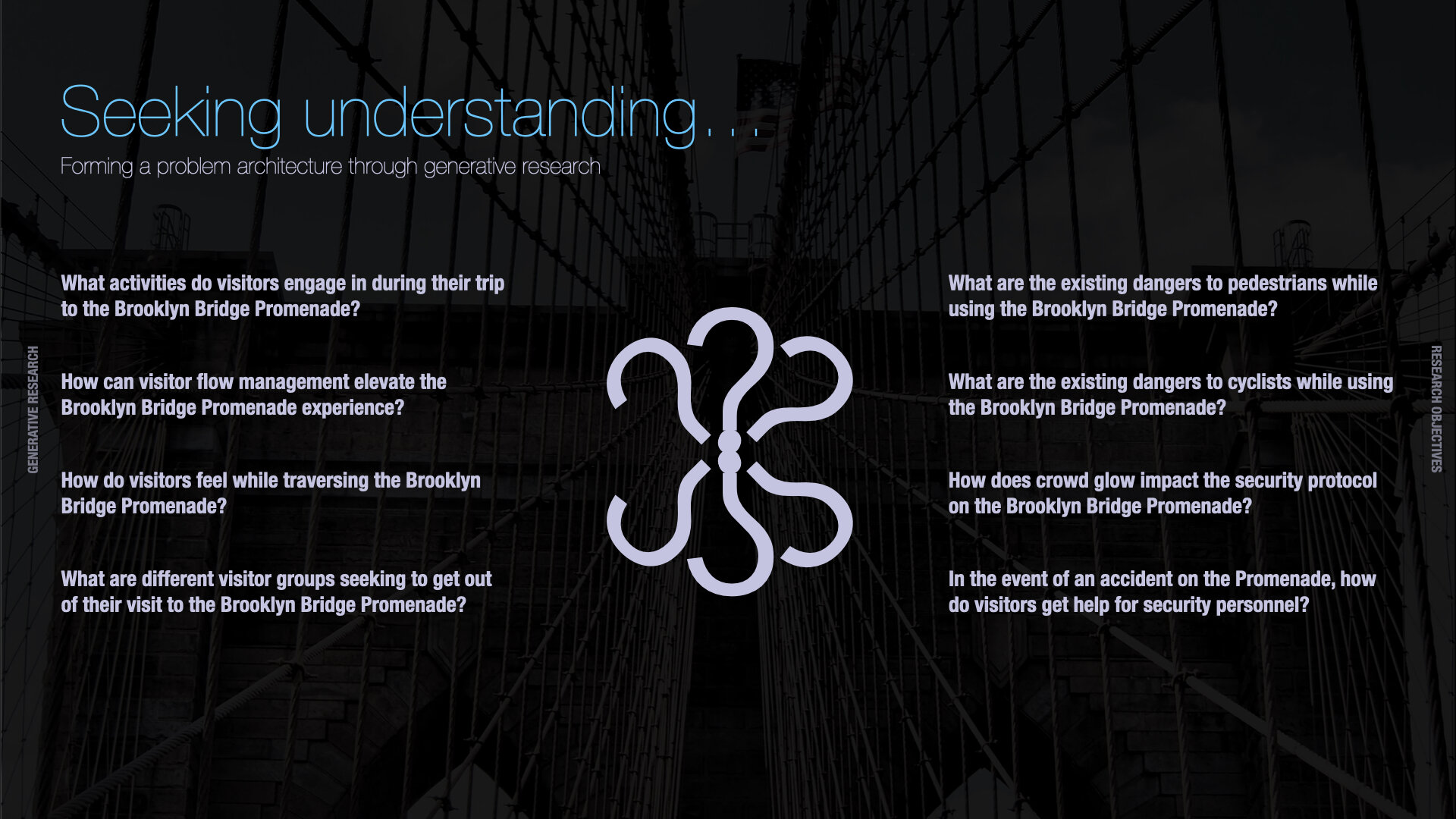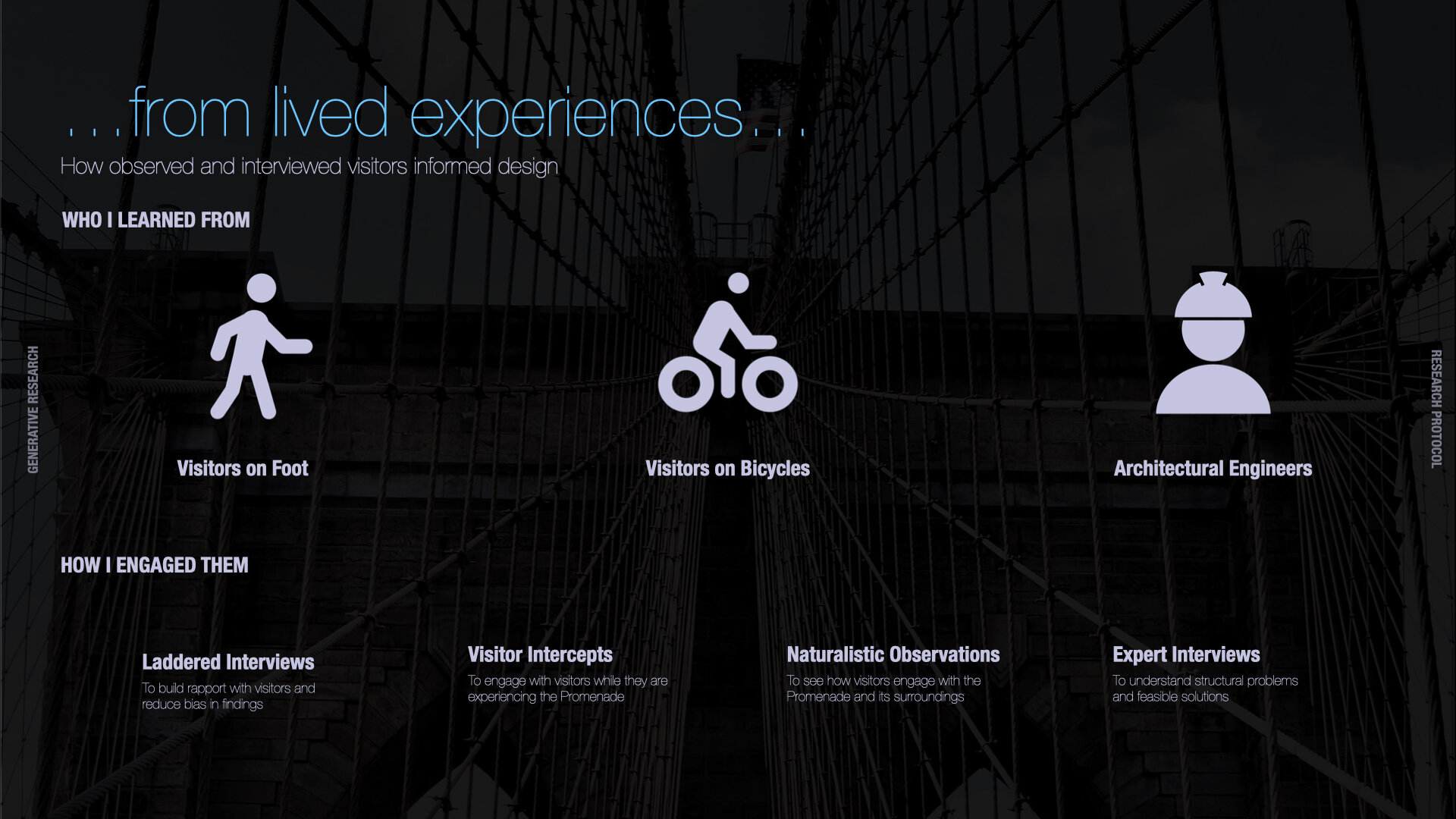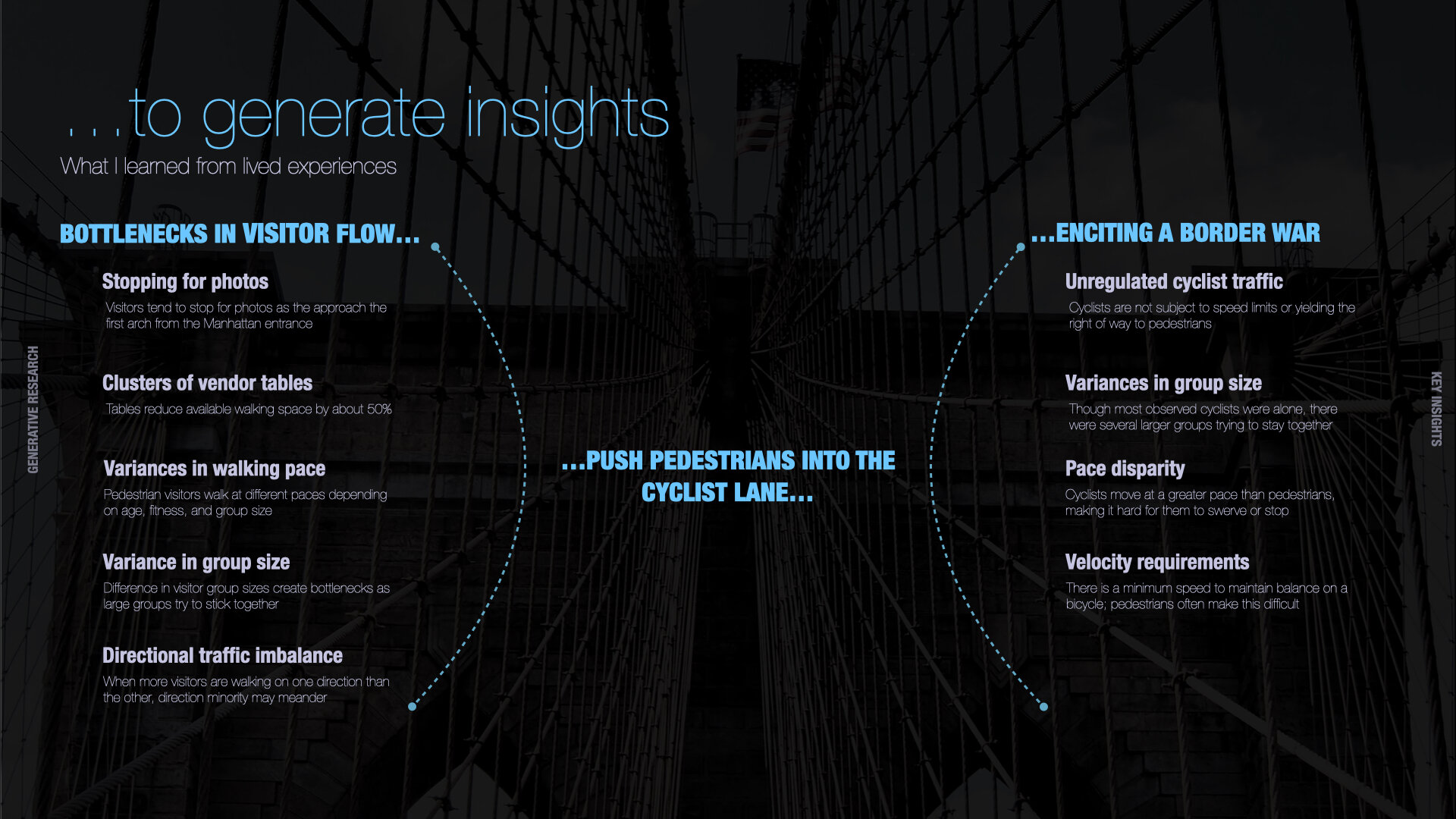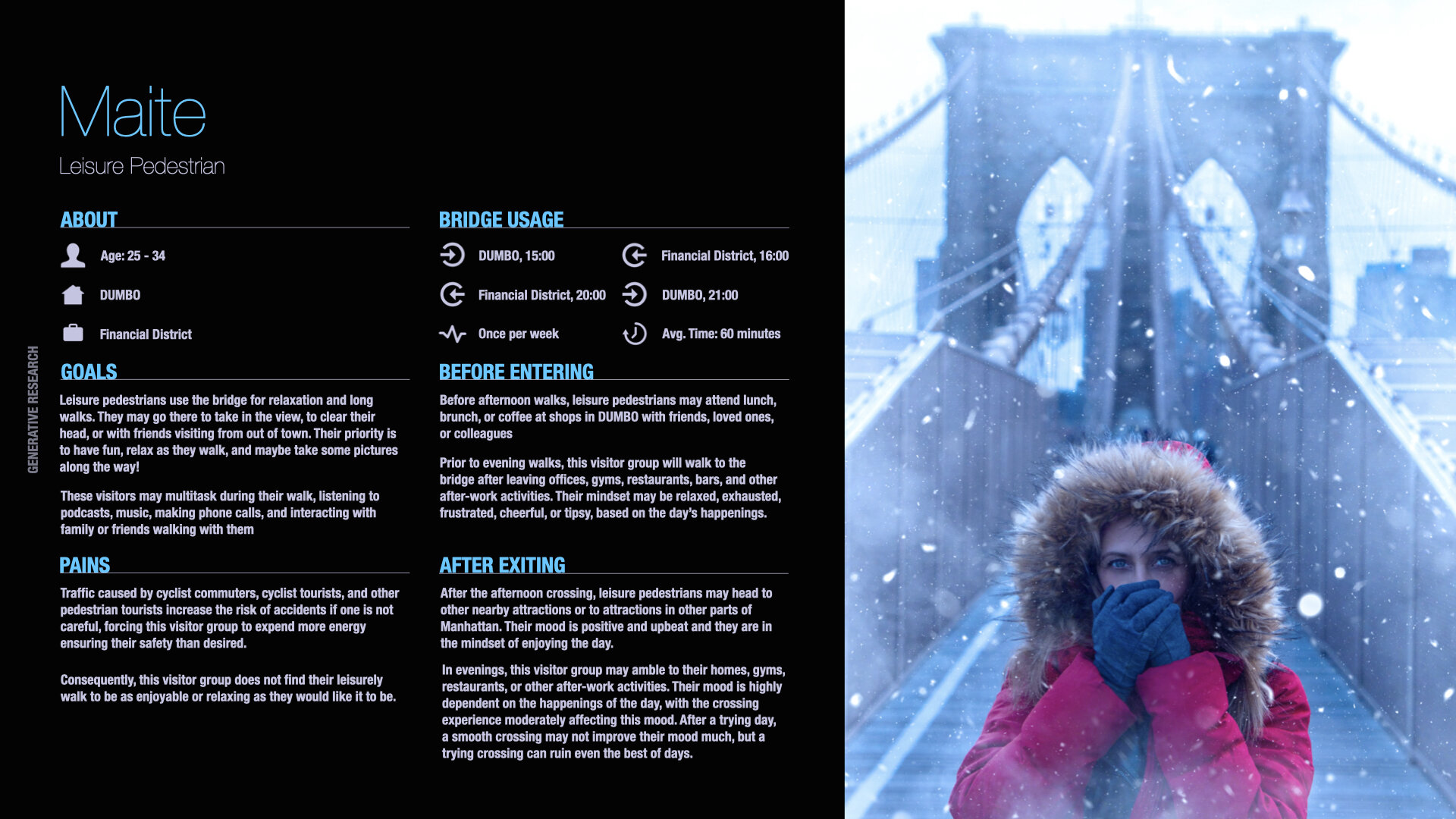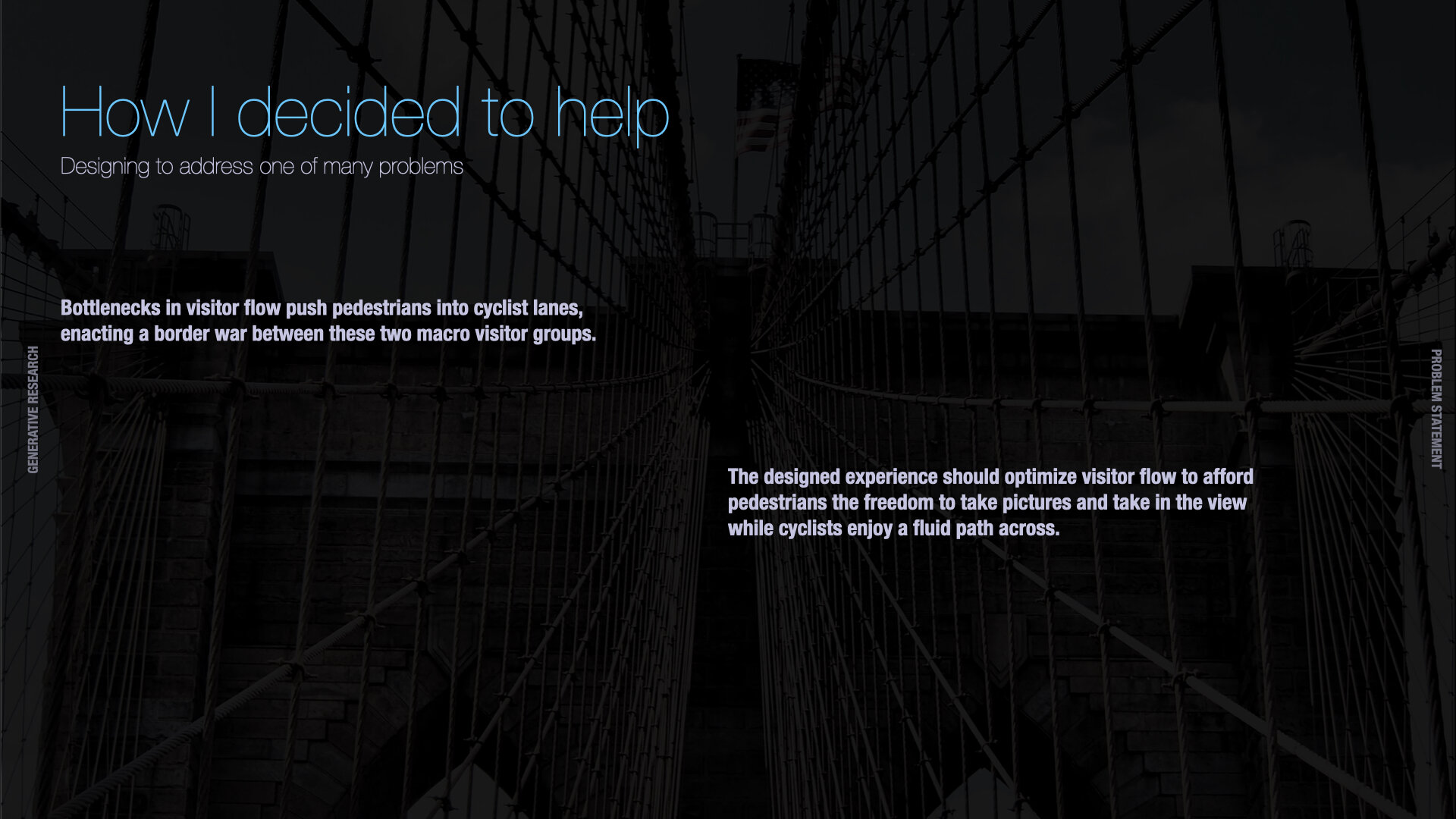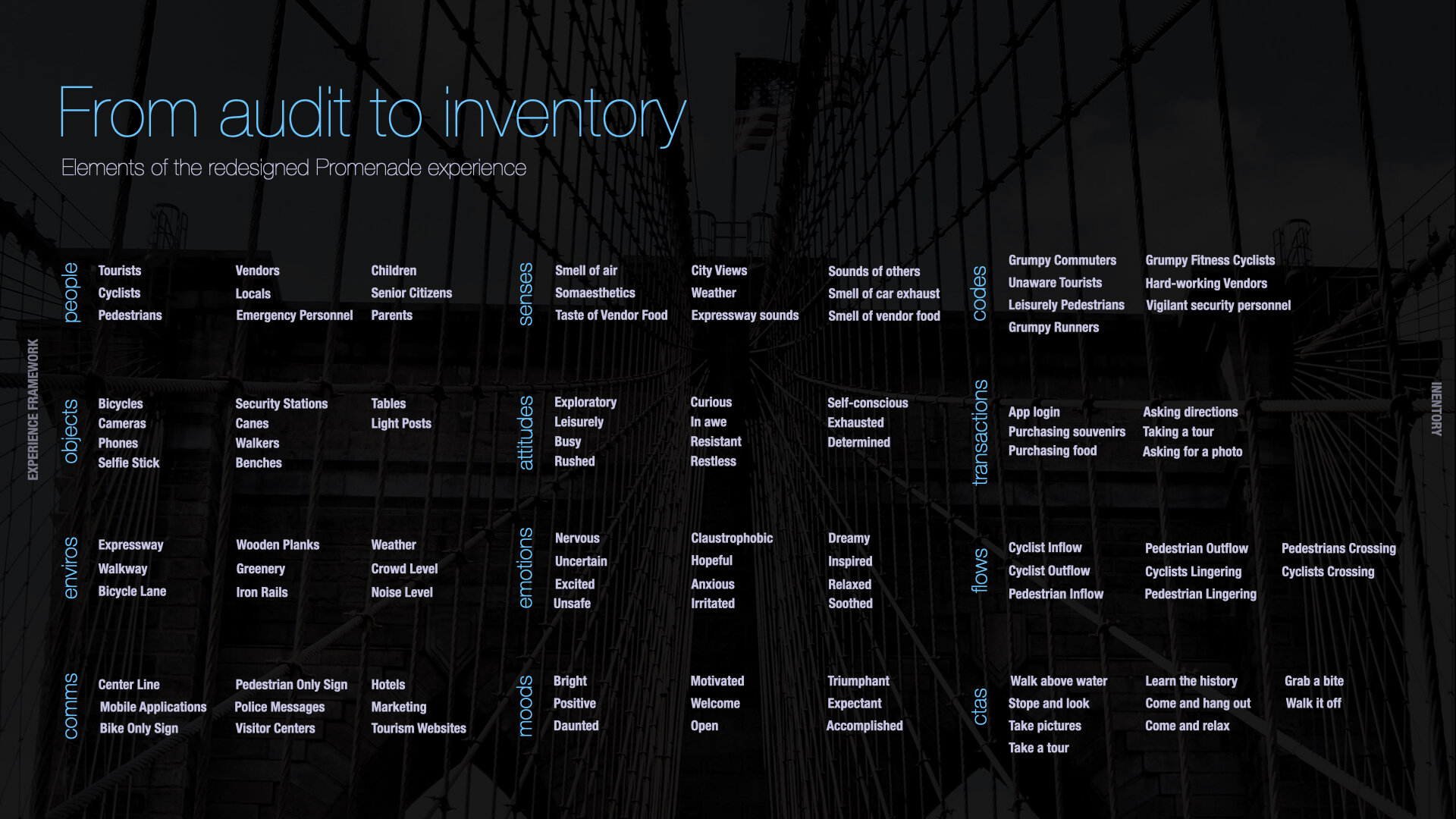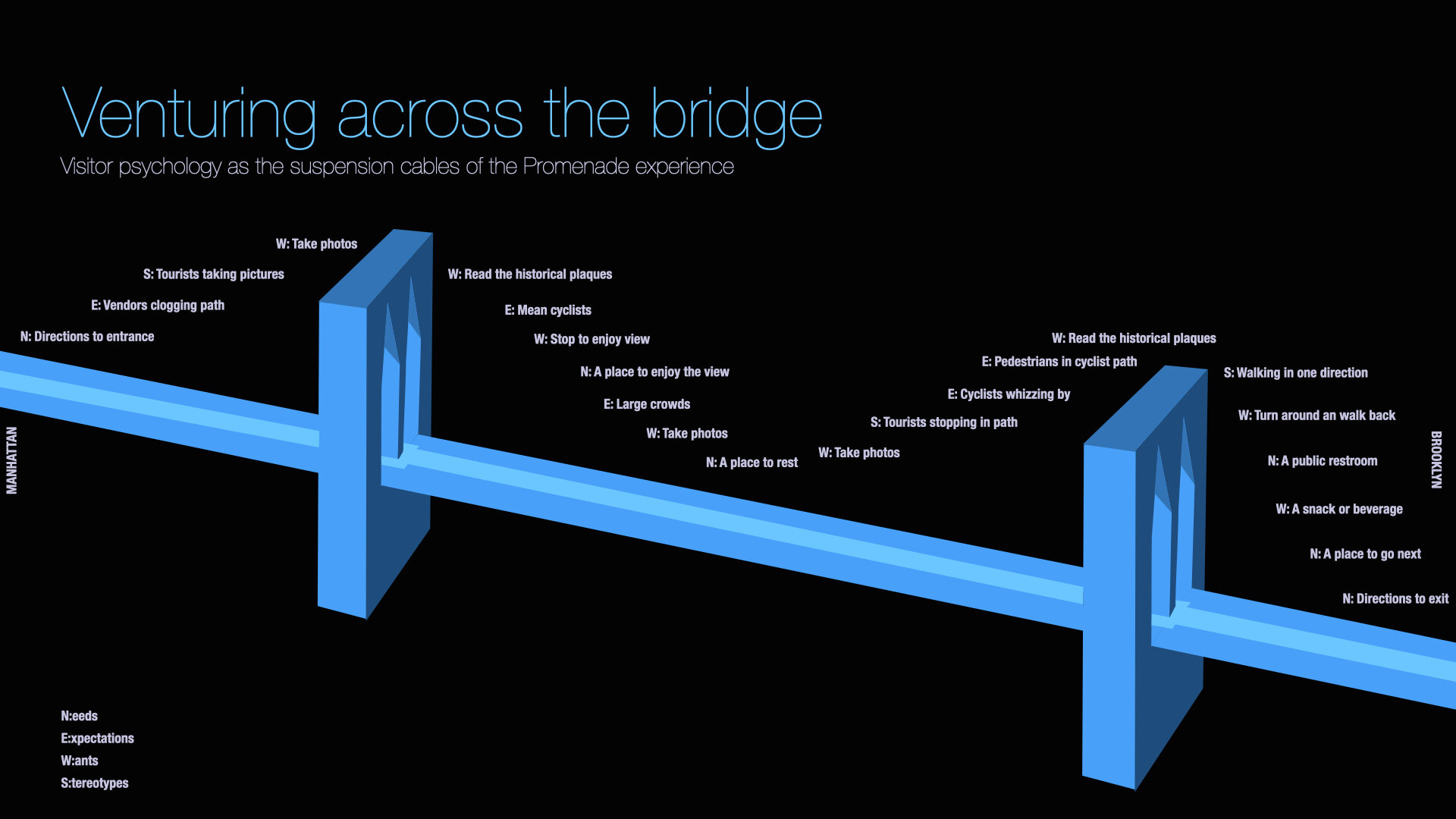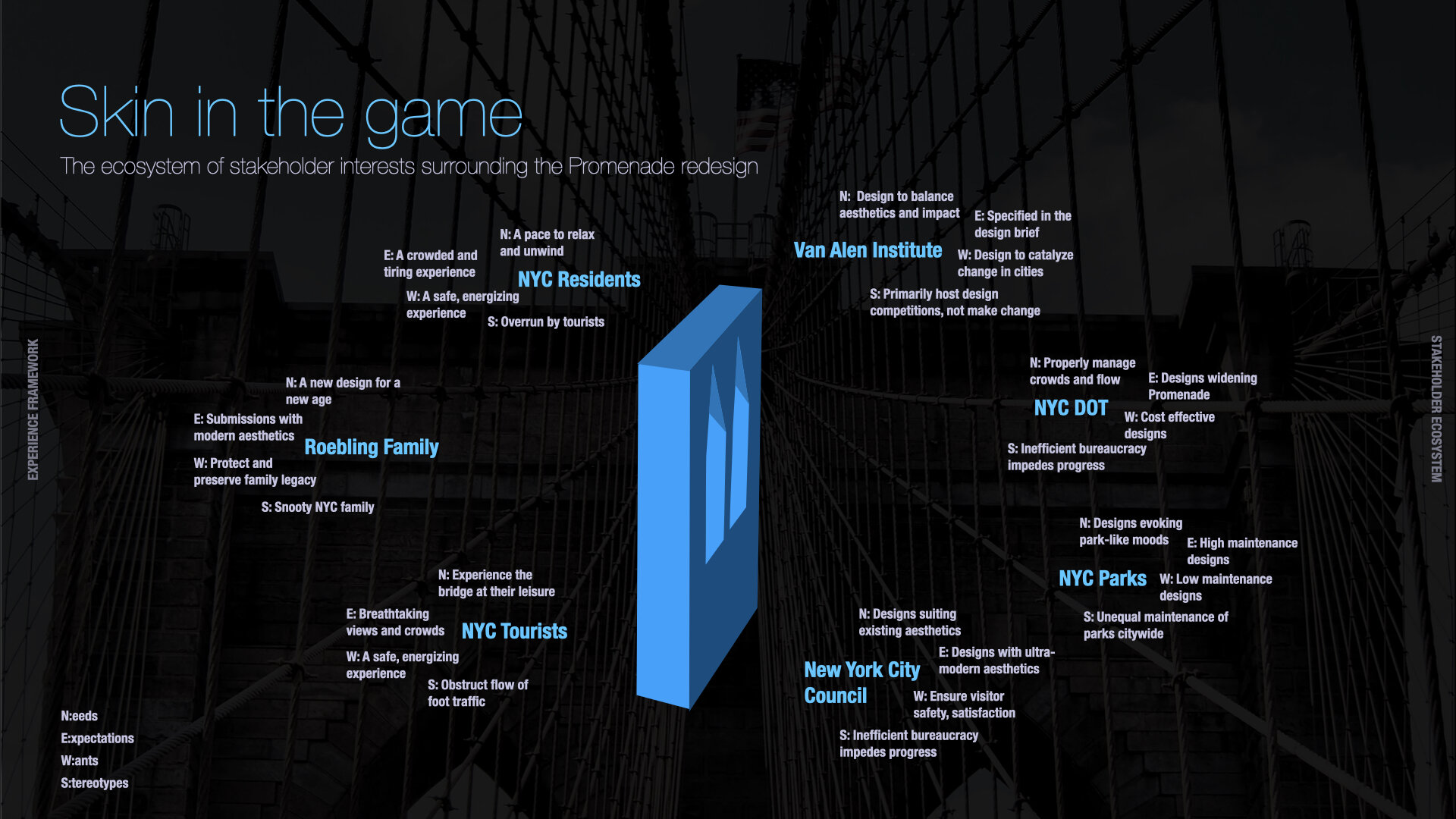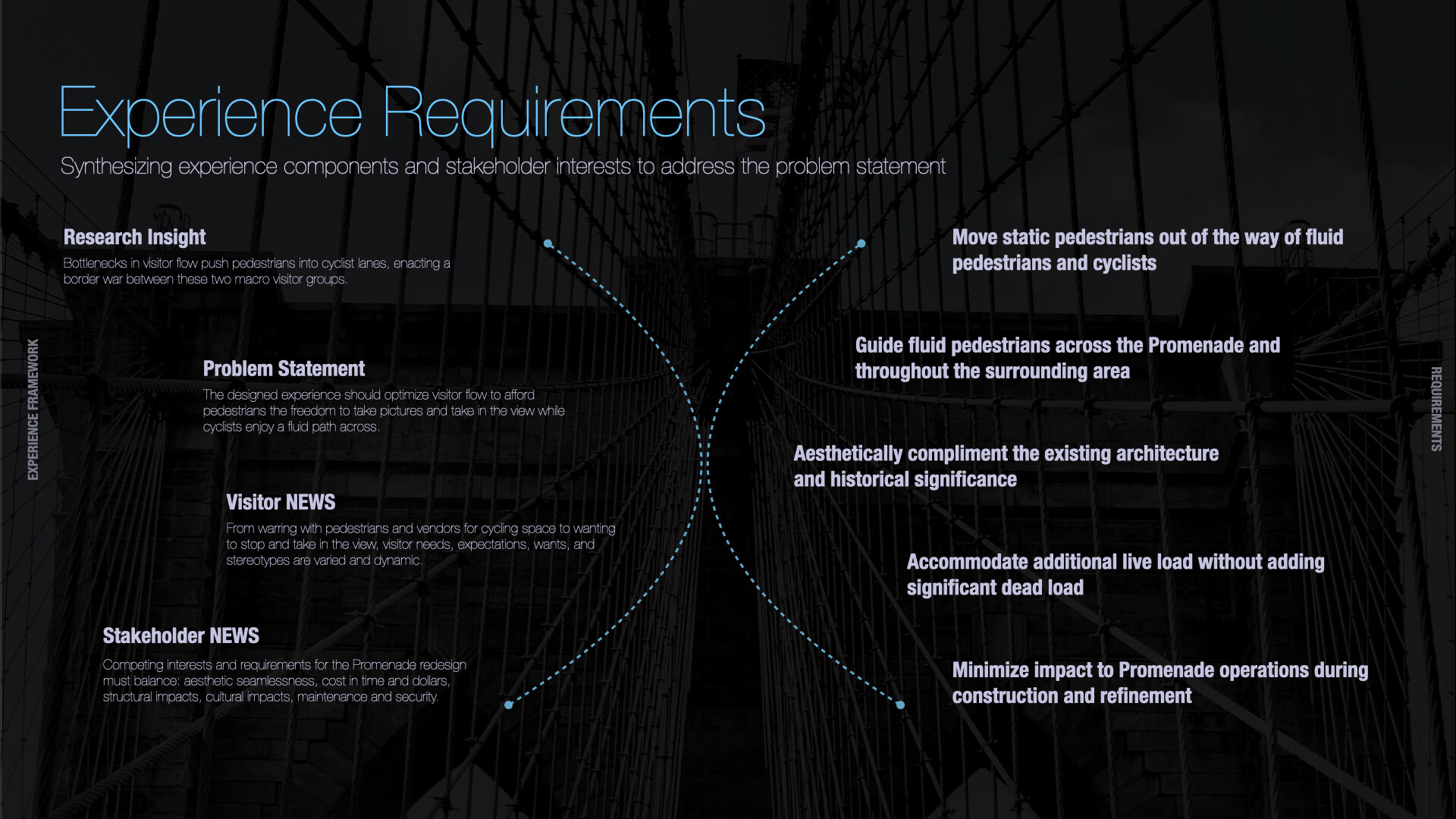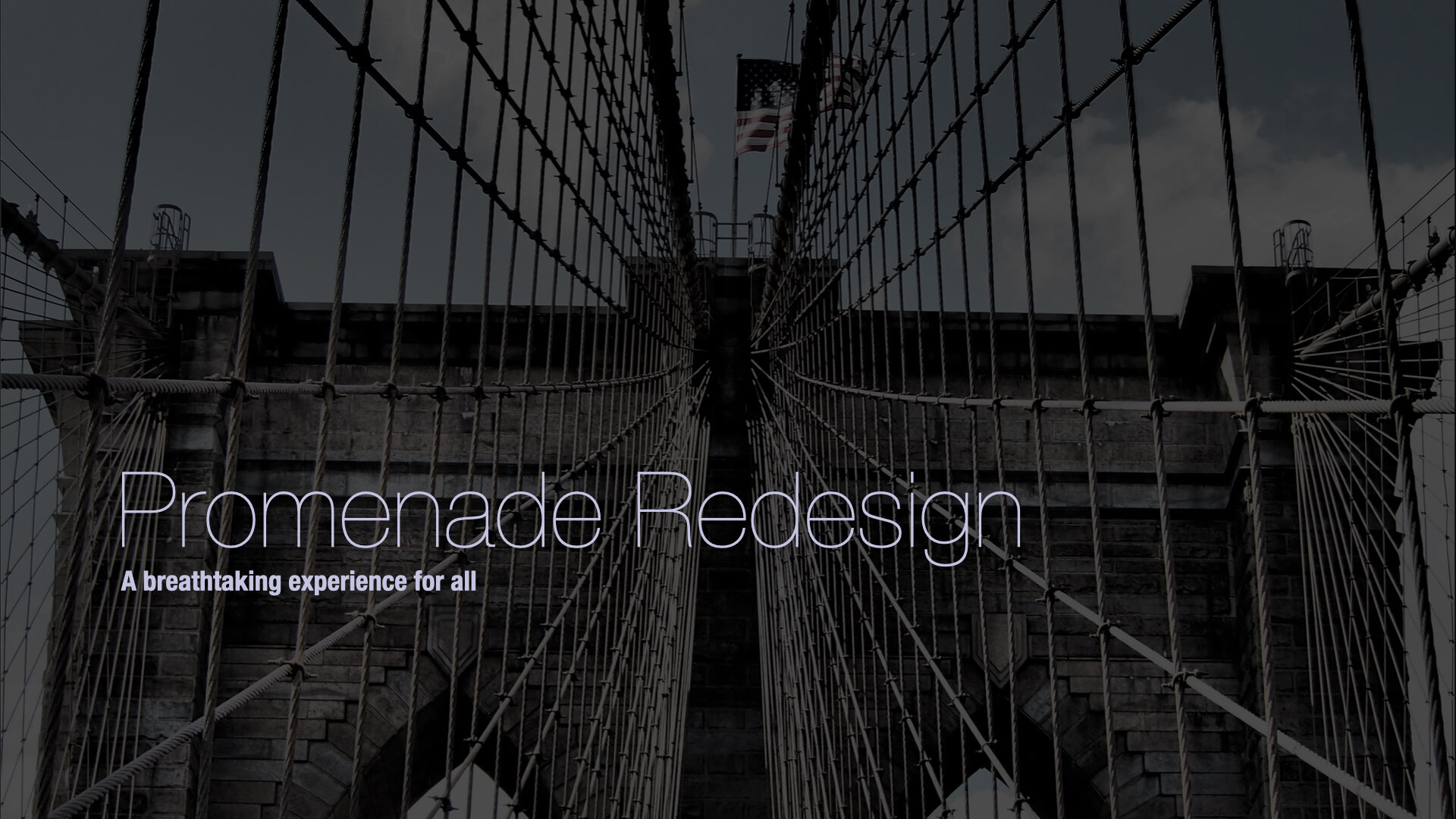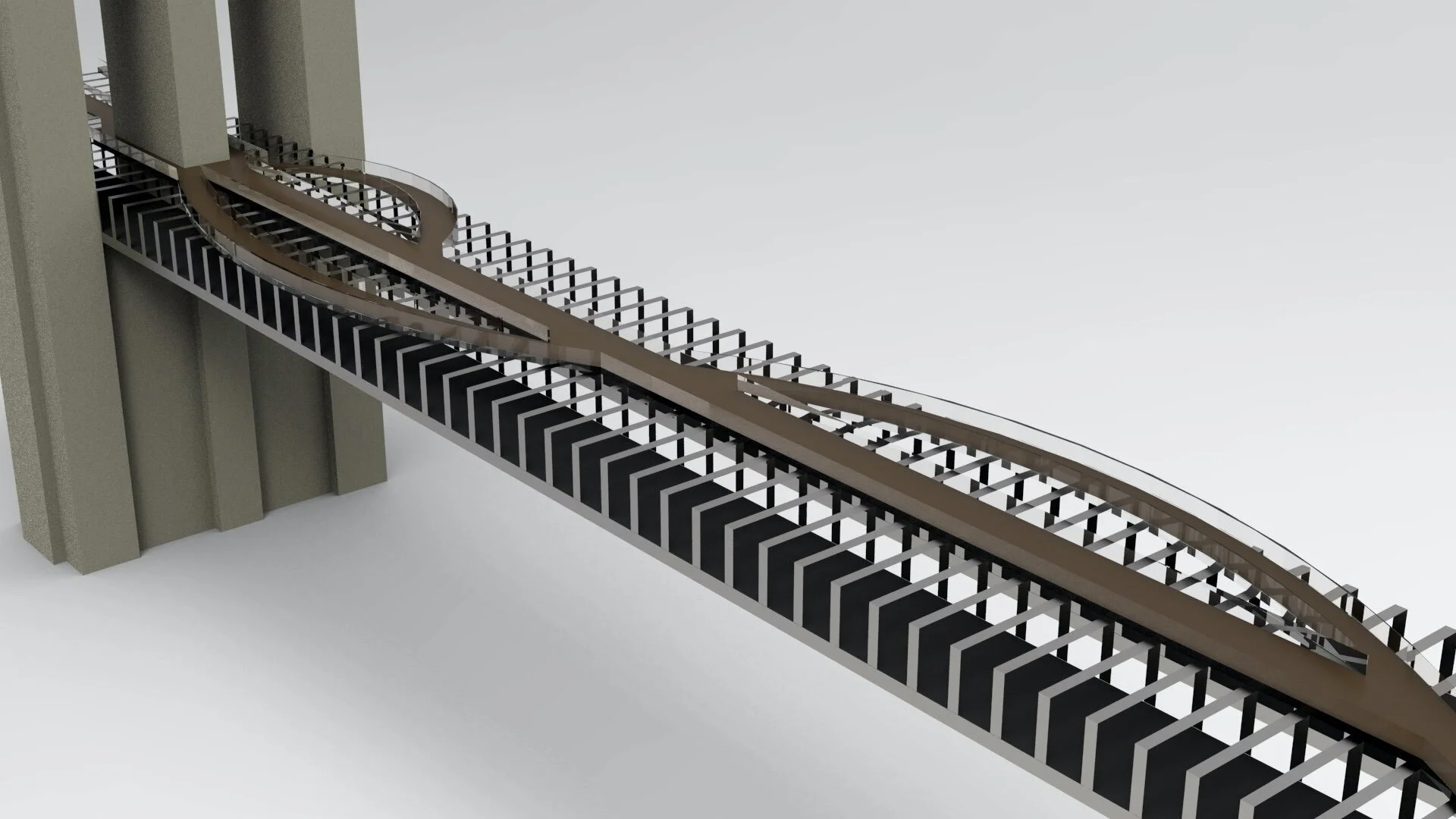A Proposed Redesign of the Promenade at Brooklyn Bridge
The Promenade at Brooklyn Bridge is a proposed redesign of the existing bridge walkway, created by first-year student Regena Reyes. Developed for an international design competition hosted by the Van Allen Institute, the project aims to enhance the visitor experience while addressing the challenges of public infrastructure. Regena's design features additional curved walkways to provide more space for visitors to take in the spectacular views from one of New York City's most beloved icons. At the same time, her proposal intends to alleviate congestion on the pathway, creating a more fluid traversal for cyclists and runners.
“My intent in making an addition is to ensure that the original beauty of the bridge shines forth and is not obscured by the changes we need to make to support the current demand for space and efficiency."
The Promenade additions are designed to create a more enjoyable experience for a wider range of users. Through her research, Regena identified the following six visitor types: leisure pedestrians, commuter pedestrians, leisure cyclists, commuter cyclists, vendors, and security personnel.
By adding curved walkways for static pedestrians to stop, take pictures, or just enjoy the view, the proposed design minimizes congestion on the pathway, creating an environment where cyclists and pedestrians can coexist successfully. Regena shares some thoughts on this project, which is her first foray into the world of urban design. "My proposed solution considers the needs of a complex stakeholder ecosystem with players who have varying and often conflicting needs, desires, expectations, and stereotypes." Let’s take a closer look at her user experience research below:
Additionally, Regena's Promenade proposal features design elements geared toward the city of New York, residents, the Department of Transportation, NYC Parks, and the Roebling Family. For instance, curved walkways, instead of a complete extension on both sides, reduces the dead load required for the design, a key factor given that the existing suspension cables may only be able to support a limited amount of weight.
The glass "picket fencing" further reduces the weight of the design, while accounting for the potential of wind load. Regena selected materials that are sustainably sourced while creating a seamless aesthetic to stay true to the original design of the Roebling Family legacy. Furthermore, the curved walkways require minimal maintenance, a key factor for NYC Parks responsible for bridge repairs.
"My additions to the Brooklyn Bridge Promenade are inspired by the bridge itself," Regena shares. "It is an architectural marvel, an engineering feat, and a physical representation of the New York spirit. My intent in making an addition is to ensure that the original beauty of the bridge shines forth and is not obscured by the changes we need to make to support the current demand for space and efficiency."




